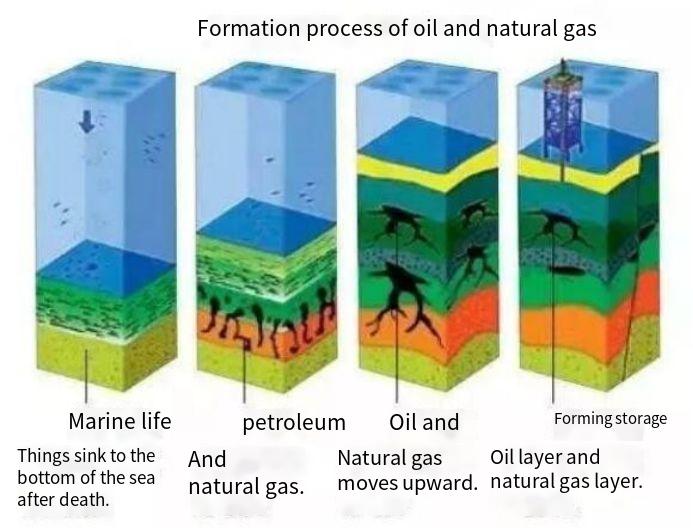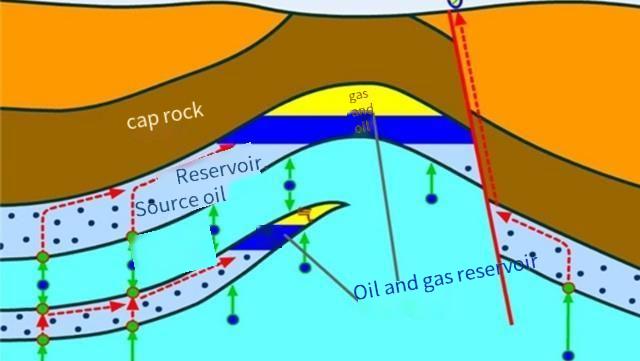- Home
- Products
-
-
Solids Control Equipment
- Linear Motion Shale Shaker
- Decanter Centrifuge
- Mud Cleaner
- Vacuum Degasser
- Centrifugal Pump
- Shear Pump
- Submersible Slurry Pump
- Mud Agitator
- Mud Gun
- Jet Mud Mixer
- Desilter
- Water Tank
- Mud Tank
- Diesel Tank
- MD210 Drilling Mud Cleaner
- Balanced Elliptical Motion Shale Shaker
- Oilfield Drilling Mud Desander
-
Solids Control System
- Drilling Mud Cooling System
- Solids Control System
- Mobile Solids Control System
- Arctic Solids Control System
-
TBM
- Tunnel Boring Mud System
-
HDD
- HDD Mud Recovery System
-
-
- News
- Services
- Marketing
- About Us
- Contact Us
- Videos
Home > KOSUN News >
Where does the oil come from?
Jan 02, 2025
For many people, drilling for oil is the same thing as drilling for water Wells: Deep underground, there is a huge liquid space filled with tens of millions of tons of oil, which can be sucked out by drilling through the formation. In fact, oil is the authentic "oil in stone", let's see what the raw material of oil looks like.
This is called Kerogen, transliterated as kerogen, and the rock containing this material is the source rock, which is commonly called source rock or source rock, from which oil is extracted.
The past and present lives of oil We know that coal comes from the remains of ancient plants, which is not controversial, because there are many coal with plant wood texture and even leaf veins and other structures. And what is oil? Everyone has seen underwater silt, which is black because it contains a lot of organic matter. The source of this organic matter is algae in the water, which are deposited on the lake bottom after they die. Given the chance to be buried quickly and cut off from oxygen, the deposited organic matter is buried under thick sedimentary rocks over long geological times. Under the high temperature and high pressure underground, their organic matter is gradually transformed into oil parent material.

The formation of oil parent material is mostly in the early stage of sedimentation and burial, when the ground temperature is not more than 50℃. After about tens of millions of years, the deeper the sediment is buried and the higher the ground temperature (about 100-150 ° C), the maturity of the oil parent material reaches a certain range and is converted into hydrocarbons (hydrocarbons), that is, liquid oil or natural gas. Because these hydrocarbons are lighter than nearby rock, they percolate upward into the pores of the source rock formation. On the way, the oil-impervious formation is blocked and stays down, and slowly gathers in this formation, and the more and more, the formation of oil fields. So coal comes from the accumulation of plant remains, while oil is the deposition of algae, mainly from water bodies. The oil parent material in the sediment of the lake is mostly from algae, bacterial spores, pollen or resin, which mainly produces hydrocarbon petroleum of liquid paraffin. The oil parent material in Marine sediments mostly comes from plankton, algae, bacteria and a few land plants, which mainly produces liquid petroleum, supplemented by natural gas. The oil parent material in land sediments is mostly from lignin of higher plants, which is mainly used to produce natural gas. Therefore, knowing the source of the oil parent material in the source rock can predict the composition of the produced oil and the ratio of oil to gas.

How is oil extracted
After geological exploration, the underground reservoir is found, the location, number and depth of the well are determined, and the drilling workers will drill on the set well location. At present, the commonly used drilling technology is rotary drilling. It consists of a set of surface equipment (including drill, derrick) and a set of lifting system and drill pipe, drill tool and drill bit. Through the lifting system, the drill tool is lifted and lowered, driven by the rotation of the rotary disk, and then the drill bit is rotated to break the rock until the target layer is reached. This is the most widely used drilling method in the world.


